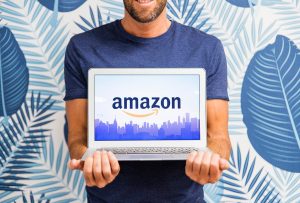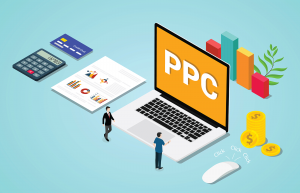There are essentially two key milestones from the perspective of retailers and shoppers when it comes to the Amazon marketplace: Prime Day and Cyber Week together with Black Friday. The latter traditionally takes place at the end of the year just before Christmas, when people look forward to the annual shopping and gift exchange. Prime Day is just as influential and important a shopping event as Cyber Week – Amazon organizes it every year in the middle of summer. The platform promotes the event weeks in advance on all channels as one of the most important e-commerce events in Europe and the USA. There is a large selection of products on the Amazon homepage, some of which are heavily discounted especially for Prime Day and only available for a limited time. The platform is pushing its own branded products such as “Amazon Basics” and “Amazon Echo” particularly hard during the shopping event.
The relevance of Prime Day for sellers and vendors

From the customer’s perspective, this global shopping event is hugely important as they can get their favorite products and brands at significantly lower prices. However, this global event is even more relevant for retailers, brands and suppliers, as Amazon massively promotes Prime Day across all online and offline channels, driving even more shoppers to the platform. Amazon is mainly targeting existing and new Prime customers. Not only are they generally more active than non-Prime customers, but they also spend three times more money on average on online purchases. From a B2B perspective, two factors are particularly beneficial for Prime Day: higher visitor numbers and an increased willingness to buy. Many sellers therefore record significantly higher sales figures every year on Prime Day, which can have a lasting positive effect as well as a short-term increase in sales. It is essential for sellers and vendors to prepare well for this event – the most important concepts here are retail readiness, PPC and display campaigns.
Preparing for Amazon Prime Day
Both visitors and buyers need one thing above all: enough goods in stock. As part of the preparations for Prime Day, Amazon usually orders large quantities of well-performing and profitable products from vendors in advance. Suppliers and manufacturers should therefore clarify a few weeks before Prime Day whether supplies can be ordered and delivered at short notice. The same applies to sellers – regardless of whether they sell via FBA or FBM. Those who handle their fulfillment via Amazon should send the goods to the Amazon logistics centers in good time before the event. The warehouses are very busy around Prime Day, which means that bottlenecks can occur shortly before the event – whether due to a lack of space or delivery problems. In addition, “out of stock” is an absolute no-go, especially during shopping events such as Prime Day and Cyber Week.
In addition to the logistical component, it should also be noted that although Prime Day only takes place on two specific days, from the seller’s point of view it is divided into three significantly longer phases:
Prime Day Lead-In Phase
Amazon’s massive media presence on all channels in consumers’ everyday lives generates enormous visibility for Prime Day and increases brand awareness. Everyone is eager to find out which products will be discounted and when the first bargains will be available. As a result, a significant increase in traffic to the marketplace can be expected around two weeks before Prime Day. In this so-called “lead-in phase”, targeted marketing can already draw initial attention to your own products.
Prime Day(s)
During the two Prime Days, Amazon expects increased user activity, which leads to more sales. Every additional sale on these days increases the bestseller ranking (BSR), which has an indirect effect on the organic keyword ranking and the sales opportunities of PPC campaigns.
Prime Day Lead-Out Phase
Even if visitor numbers fall again quickly immediately after Prime Day and settle at an average level, it should still be noted that the probability of sales remains high during the lead-out phase, which lasts around two weeks. Advertising campaigns and retargeting measures in particular should therefore be continued intensively in the two weeks following Prime Day.
Amazon Prime Day Statistics
To better understand the importance of Prime Day for Amazon and its buyers and sellers, it’s worth taking a look at some statistics. Here are just a few impressive figures:
- Prime Day takes place on the same days in 17 countries worldwide.
- In 2018, Prime Day generated total sales of 1.5 billion US dollars.
- One million Fire TV devices were sold on Prime Day 2018.
- Amazon sold a total of one million smart home devices in the USA on Prime Day 2018.
- With one million Prime Day deals, Amazon achieved a total of 100 million sales worldwide in 2018.
Every year, Amazon manages to raise the global profile of Prime Day and make it increasingly popular with consumers. In addition to pure discount shopping, Prime Day has now also developed into an entertainment event with concerts and special promotions.
The question quickly arises:
Is Prime Day worthwhile for Amazon?

In short: Absolutely! At this point, it’s worth taking a brief look at the basic concept of the marketplace and the associated Amazon Flywheel, which explains why Amazon is so successful. The more buyers interact with the “Amazon” brand on the platform, the more sellers are attracted, which further increases the range of products and deals on offer. With its enormous reach and high retention rate of Prime customers, Prime Day reinforces this basic principle. This means that more and more consumers are becoming active in the Amazon ecosystem and are more likely to spend their money there for online purchases in the short, medium and long term – and less and less elsewhere. For sellers and vendors, however, this is both a blessing and a curse: on the one hand, the right strategy, suitable products and attractive offers can significantly increase sales on Prime Day. On the other hand, from a B2B perspective, dependency on just one sales channel is growing. However, with the right preparation, a sensible distribution of the advertising budget and the targeted selection of products – for example for lightning offers or manual discounts – Prime Day can be used optimally from the retailer’s perspective.
Product and campaign optimization for Prime Day
At this point, it is essential to understand the differences and possibilities for sellers and vendors in order to prepare specifically for Prime Day. Vendors, i.e. suppliers to Amazon (e.g. manufacturers, brands, wholesalers), cannot simply lower the prices of their products on their own. Exclusive Prime Day deals, for example, can only be implemented with the approval of the Amazon Vendor Manager. In return, however, these offers often appear on special deal pages that Amazon sets up for Prime Day. Sellers, on the other hand, have the option of individually adjusting the sales prices of their products for Prime Day and deciding for themselves which products they want to offer on the marketplace and in what quantities.
However, one aspect is the same for both: you need to take care of Amazon SEO and Amazon Advertising in good time. Even if shoppers visit the special deal pages more often on Prime Day, the general number of visitors to the platform on these days is significantly higher than on “normal” days. This increases the likelihood that customers will not only buy Prime Day deals, but also add other products to their shopping cart – provided they are clearly visible and optimally placed.
Optimize Amazon products for Prime Day
Well-optimized products form the basis of all activities on the Amazon platform. Sales-promoting images, meaningful titles and keyword-optimized bullet points and product descriptions are among the absolute basics. They also form the basis for how successful performance marketing campaigns will be later on. One factor that should not be underestimated is the time required for excellent and comprehensive product optimization – especially for larger portfolios. Preparations for Prime Day should therefore begin in good time and, above all, in a structured manner. It is important to note that it takes a certain amount of time for all stored Amazon keywords to be indexed in the ASIN listing and to achieve good positions in the search results (SERP). In addition, optimization should not only focus on Amazon’s A9 algorithm. Ultimately, real people buy the products – and a mere string of keywords will not convince them. The right approach to the target group and the key product features should therefore be clearly highlighted on every product detail page. As a specialized Amazon SEO agency, we know that it is a challenge for many sellers and vendors to proceed in a structured and timely manner with a large number of items.
Preparing Amazon PPC campaigns for Prime Day

Targeted performance marketing measures on Amazon are essential, especially on Prime Day. Those who make the wrong calculations here or have only set up rough automatic campaign structures are very likely to be wasting enormous potential – and therefore money. As the number of visitors to the Amazon marketplace on Prime Day is significantly higher than on average days, PPC-based advertising campaigns are clicked on more frequently. It is therefore crucial to temporarily increase the daily budget at an early stage and adjust the bids on relevant keywords in order to continue to win the auctions against the competition and remain visible. In our experience, the actual cost per click(CPC) is not exorbitantly higher on Prime Day, but only increases slightly – often only by a few cents. However, as both the click-through rate (CTR) and the conversion rate (CVR) are typically above average, the ratio between advertising expenditure and revenue(ACoS or ROAS) improves at an above-average rate – despite only slight CPC increases. Ultimately, this means that every euro invested in PPC advertising generates a disproportionately high number of sales on Prime Day. In other words: costs rise slightly, sales rise sharply. It is therefore worth analyzing the campaigns in detail in the run-up to Prime Day and adjusting them if necessary. The following points must be taken into account:
✅ Sponsored brand ads (Sponsored Brands) require manual approval by Amazon. They should therefore be created and approved in good time so that they can be displayed on Prime Day.
✅ Bestsellers with good ACoS values deserve special attention: higher budgets and increased bids should be planned for these.
✅ Analyze past Prime Day data: The historical values from the last Prime Day should be analyzed in good time in order to transfer findings to current campaigns (e.g. which categories performed particularly well).
✅ Targeted advertising against competitors: Target competitor products with sponsored products and product-related targeting. At the same time, self-protection campaigns should be set up to protect your own products from aggressive bids by competitors.
✅ Create special Prime Day PPC campaigns for sponsored products and allocate separate budgets. Only top products should be added here.
✅ Significantly increase budgets for well-performing automated campaigns to ensure maximum playout, especially on competitor products.
✅ Download and archive the keyword and ASIN report after Prime Day so that you can use the insights gained for the next Prime Day.
Prepare Amazon DSP for Prime Day
As an Amazon retailer, measures for Prime Day should not only be taken in high-revenue PPC marketing. A customer’s purchase decision often begins much earlier and is only implemented later on the Amazon marketplace. Amazon DSP can and should therefore be used specifically for Prime Day – through broad display campaigns and well thought-out targeting of suitable target groups. Programmatic advertising makes it possible to display advertisements for your own products on numerous websites outside of Amazon and thus motivate potential buyers to buy early on before they even search for products on the marketplace. However, it should be noted that the budgets for Amazon DSP are set significantly higher than for PPC campaigns, as display campaigns are not billed per click, but per 1,000 impressions (CPM or CPP model). This means that although very high visibility is achieved, the click rate tends to be lower. It therefore makes more sense to focus on retargeting campaigns for Prime Day and the following two weeks. If you manage to significantly increase the number of visitors to your own products through well-optimized listings and effective PPC campaigns, you will also increase the “pool” of potential future buyers who can then be persuaded to make a purchase via retargeting measures. In other words, the higher the organic and paid traffic on Amazon itself, the more data and starting points are later available for retargeting campaigns via Amazon DSP. As traffic increases significantly on Prime Day, this type of downstream advertising should definitely be included in the overall strategy.
Criticism of Amazon Prime Day

Where there is so much hype around one or two high-turnover sales days, critical voices are naturally not far away. On the one hand, criticism is generally directed against the “Amazon system ” – issues such as fair wages, counterfeit products or the market power of large American corporations are the focus here. On the other hand, there is also direct criticism of Prime Day itself. For example, Die Welt reports that consumer advocates are warning against Prime Day. In this context, there is talk of “psychological sales torture instruments” such as expiring countdown timers and artificial scarcity. However, the fact that such measures were not invented by Amazon, but have been used in e-commerce for over ten years – on platforms such as eBay, Otto, Zalando and numerous other online stores – often goes unmentioned. The choice of the word “instrument of torture” also shows a highly subjective view and poorly substantiated argumentation. However, the criticism that not every advertised special offer is actually a real advantage for consumers is entirely justified – even if this is by no means an exclusive Amazon phenomenon. Similar sales-promoting and sometimes not always customer-friendly methods can also be found in Alibaba’s Chinese shopping event “Singles’ Day”, for example, which generates even higher sales than Prime Day. In our view, it is ultimately always the consumer’s responsibility to compare prices and critically scrutinize overly discounted offers. The Chrome browser plugin “Keepa” offers a simple and free way to check Prime Day offers for real bargains. Once installed, it displays the price development directly next to each product. This makes it easy to see whether prices were artificially increased before Prime Day in order to pass them off as a supposed discount promotion afterwards. With “Keepa”, this practice can be uncovered very transparently.
Conclusion: Is Prime Day worth it?
In short: Yes, Prime Day is worthwhile and creates a win-win-win situation:
Amazon gains new Prime customers during this time, increases its reach both for itself and for retailers and benefits directly on Prime Day through increased sales.
Sellers and vendors can massively increase their turnover and sales over a period of four weeks (2 weeks lead-in + 2 weeks lead-out) as well as on Prime Day itself and win new customers.
Every year, buyers have the opportunity to take advantage of direct and indirect Prime Day discounts.
Keeping an eye on profitability
From a retailer’s perspective, however, it is important not to lose sight of the profitability of promotions despite rising sales figures. Not every euro invested in advertising or discounts is worthwhile and should be carefully calculated. If certain products within a category are already bestsellers and rank very well organically, then even well-placed deals on Prime Day can only bring limited additional benefits. In addition to profitability, the market share strategy also plays a role: every product sold by a brand is very unlikely to be bought by a competitor brand or another retailer. So if you want to gain market share or squeeze out competitors, you can consciously accept less profitable sales.
But one thing is certain: if there’s one thing Prime Day can achieve, it’s sales.